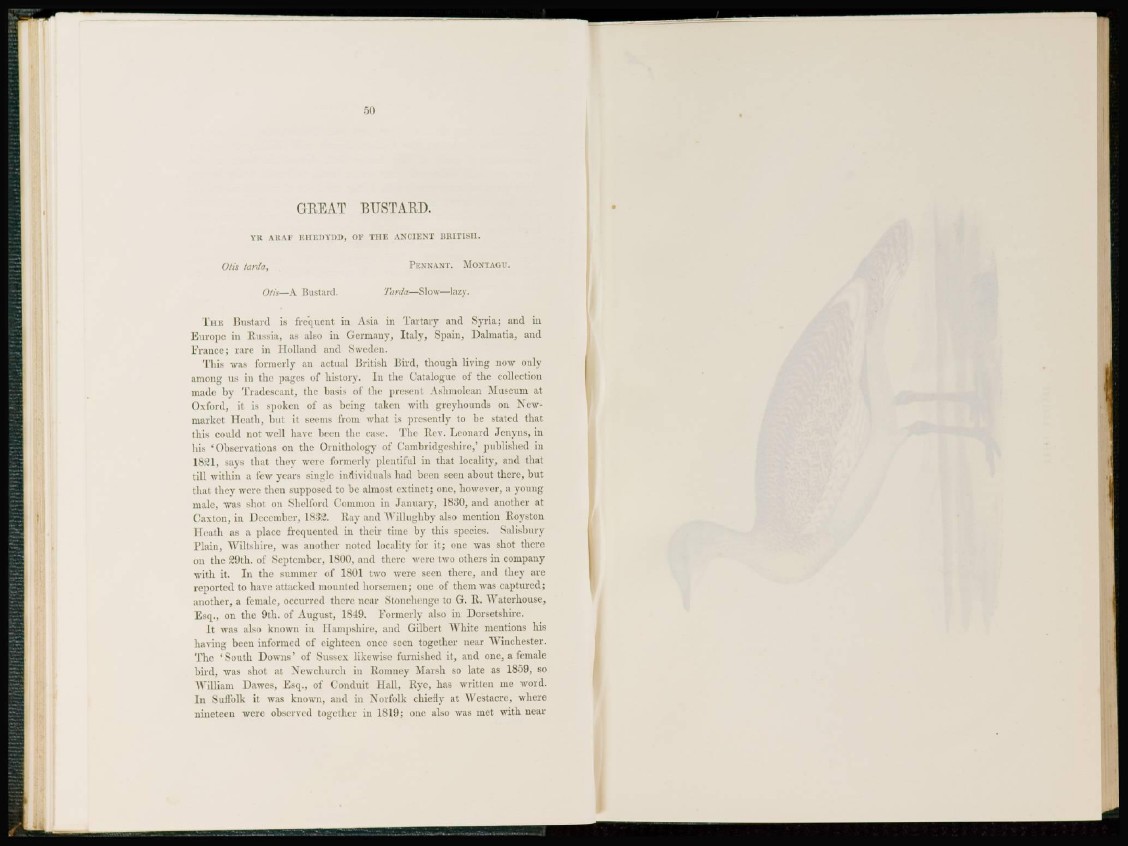
GREAT BUSTARD.
YR AUAF EHEI>YI)I>, OF THE ANCIENT BRITISH.
Otis tarda, PENNANT. MONTAGU.
Otis—A Bustard. Tarda—Slow—lazy.
T H E Bustard is frequent in Asia in Tartary and Syria; and in
Europe hi Russia, as also in Germany, Italy, Spain, Dalmatia, and
Franco; rare in I [olland and Sweden.
This was formerly an actual British Bird, though living now only
among us in t h e pages of history. In the Catalogue of the collection
made by Tradescantj the basis of the present Ashraolean Museum at
Oxford, it is spoken of as being taken with greyhounds on Newmarket
Heath, but it seems from what is presently to be stated that
this could not well have been the e a s e The Rev. Leonard Jcnyns, in
his 'Observations on t h e Ornithology of Cambridgeshire,' published in
lSi.'l, says that they were formerly plentiful in that locality, and that
till within a few years single individuals had been seen about there, b u t
that they were then supposed to b e almost extinct; one, however, a young
male, was shot on Shclford Common in January, 1830, and another at
Oaxton, in December, 1832. Ray and Willughby also mention Royston
Heath as a place frequented in their time by this species. Salisbury
Plain, Wiltshire, was another noted locality for i t ; one was shot there
on the 29th. of September, 1800, and t h e r e were two others i n company
with it. In the summer of 1801 two were seen there, and they are
reported to have attacked mounted horsemen; one of them was captured;
another, a female, occurred there near Stonehenge to G. B . Waterhouse,
E s q . , on t h e 9th. of August, 1849. Formerly also in Dorsetshire.
It was also known in Hampshire, and Gilbert White mentions his
having been informed of eighteen once seen together near Winchester.
The ' S o u t h Downs' of Sussex likewise furnished it, and one, a female
bird, was shot at Newchurch in Romney Marsh so late as 1859, so
William Dawes, Esq., of Conduit Hall, Rye, has written me word.
I n Suffolk it was known, and in Norfolk chiefly at Westacre, where
nineteen were observed together in 1819; one also was met with near